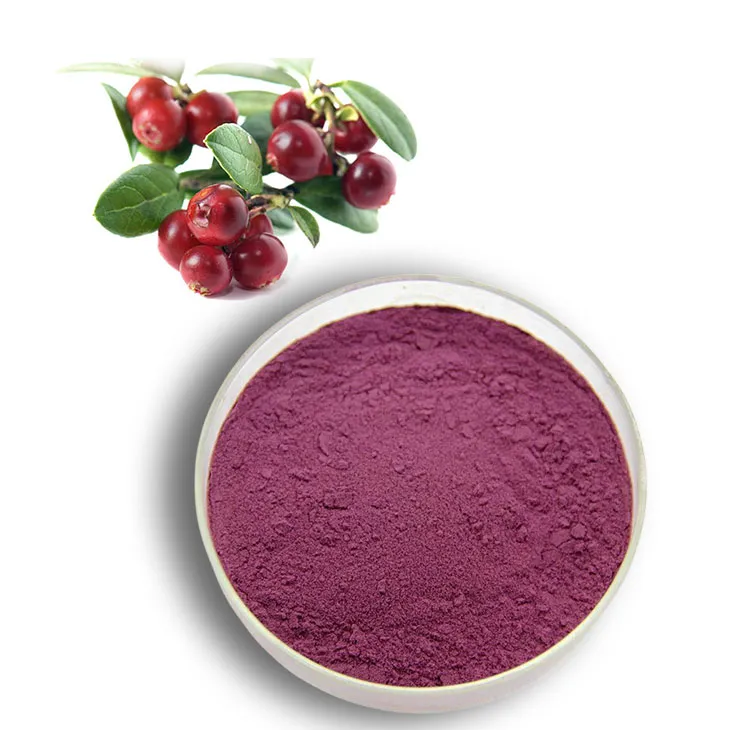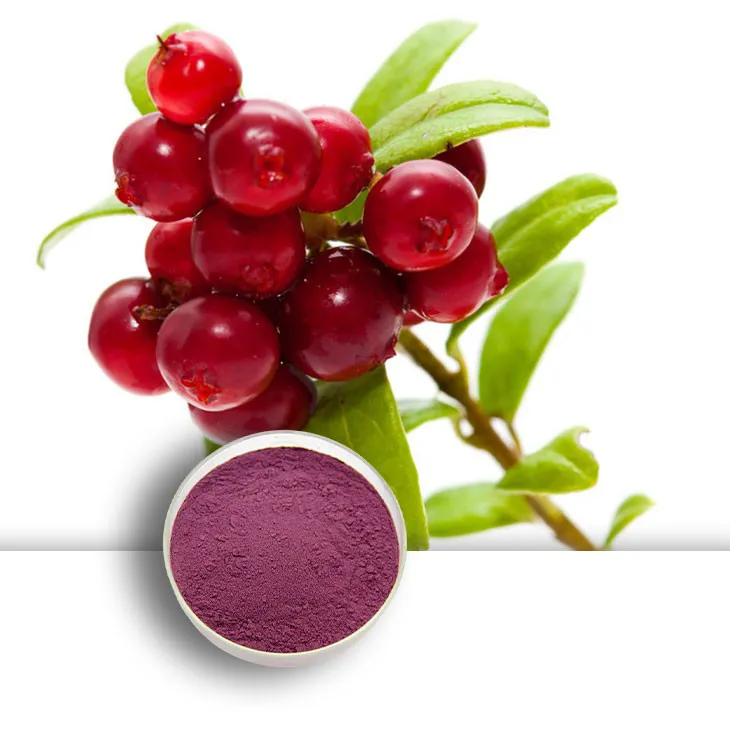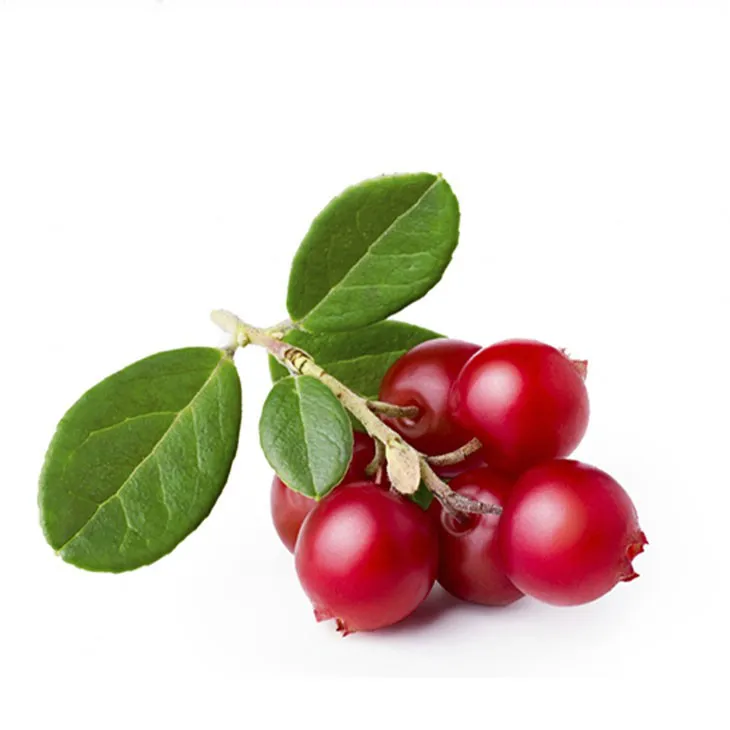- 0086-571-85302990
- sales@greenskybio.com
The best method for extracting bilberry extract.
2024-11-29

1. Introduction
Bilberries (Vaccinium myrtillus) are small, dark - blue berries rich in various bioactive compounds such as anthocyanins, flavonoids, and phenolic acids. These compounds contribute to its potential health benefits, including antioxidant, anti - inflammatory, and vision - improving properties. Extracting Bilberry Extract efficiently and with high quality is crucial for its application in the food, pharmaceutical, and cosmetic industries. This article will explore different extraction methods, considering factors like yield, purity, and bioactivity.

2. Traditional extraction methods
2.1 Maceration
Maceration is one of the simplest and oldest extraction methods. In this process:
- The bilberries are first crushed or ground to break the cell walls and increase the surface area for extraction.
- The crushed bilberries are then soaked in a suitable solvent, usually ethanol or water, for a certain period, typically several days to weeks.
- During this time, the bioactive compounds gradually diffuse from the bilberry matrix into the solvent.
- After the maceration period, the liquid (extract) is separated from the solid residue by filtration or centrifugation.
Advantages of maceration include its simplicity and low cost. However, it has some drawbacks. The extraction time is relatively long, which may lead to degradation of some bioactive compounds. Also, the yield may not be as high as some modern extraction methods.
2.2 Soxhlet extraction
The Soxhlet extraction method involves:
- The bilberry sample is placed in a thimble inside a Soxhlet apparatus.
- A solvent, often ethanol or a mixture of solvents, is continuously circulated through the sample. The solvent vaporizes in the distillation flask, rises up, condenses in the condenser, and then drips back onto the sample in the thimble.
- This continuous extraction process can last for several hours to days until the extraction is considered complete.
- Finally, the extract is collected from the distillation flask after separation from the solvent.
The Soxhlet extraction is more efficient than maceration in terms of extraction yield. However, it also has some limitations. The high temperature and long extraction time may cause thermal degradation of some heat - sensitive bioactive compounds. Moreover, it requires more complex equipment compared to maceration.

3. Modern extraction methods
3.1 Supercritical fluid extraction (SFE)
Supercritical fluid extraction is a relatively new and advanced technique:
- In SFE, a supercritical fluid, usually carbon dioxide (CO₂), is used as the extraction solvent. CO₂ is non - toxic, non - flammable, and has a relatively low critical temperature (31.1 °C) and pressure (73.8 bar).
- The bilberry sample is placed in an extraction vessel. The supercritical CO₂ is pumped into the vessel at the appropriate temperature and pressure.
- The supercritical CO₂ has unique properties that allow it to penetrate the bilberry matrix and dissolve the bioactive compounds efficiently.
- After extraction, the pressure is reduced, and the CO₂ returns to its gaseous state, leaving the extract behind.
Advantages of SFE include high extraction efficiency, selectivity for specific compounds, and the ability to produce a relatively pure extract. Since the process is carried out at relatively low temperatures, there is less degradation of heat - sensitive compounds. However, the equipment for SFE is expensive, which may limit its widespread use.
3.2 Ultrasonic - assisted extraction (UAE)
Ultrasonic - assisted extraction utilizes ultrasonic waves to enhance the extraction process:
- The bilberry sample is placed in a solvent, such as ethanol or water.
- Ultrasonic waves are then applied to the sample - solvent mixture. The ultrasonic waves create cavitation bubbles in the solvent. When these bubbles collapse, they generate high - pressure and high - temperature micro - environments.
- These micro - environments help to break the cell walls of the bilberries and enhance the mass transfer of bioactive compounds from the sample to the solvent.
- The extraction time is usually shorter compared to traditional methods, typically ranging from a few minutes to a few hours.
UAE has the advantages of short extraction time, high yield, and relatively low energy consumption. However, the quality of the extract may be affected by factors such as ultrasonic power and extraction time, and proper optimization is required.
3.3 Microwave - assisted extraction (MAE)
Microwave - assisted extraction involves the use of microwaves to heat the sample - solvent system:
- The bilberry sample is mixed with a suitable solvent in a microwave - compatible container.
- Microwaves are then applied to the mixture. The microwaves cause the polar molecules in the solvent to rotate rapidly, generating heat.
- This heat is transferred to the bilberry sample, which helps to break the cell walls and release the bioactive compounds into the solvent.
- The extraction time in MAE is relatively short, usually within minutes to tens of minutes.
MAE offers high extraction efficiency, short extraction time, and reduced solvent consumption. However, like UAE, it requires careful optimization of parameters such as microwave power and extraction time to ensure the quality of the extract.

4. Factors affecting extraction
4.1 Solvent selection
The choice of solvent is crucial in extraction. Different solvents have different affinities for the bioactive compounds in bilberries:
- Ethanol is a commonly used solvent. It has good solubility for anthocyanins and other phenolic compounds. It is also relatively safe and can be easily removed from the extract.
- Water can also be used as a solvent, especially for extracting water - soluble compounds. However, water - based extracts may be more prone to microbial growth and degradation.
- Mixed solvents, such as ethanol - water mixtures, are often used to balance the solubility of different compounds and optimize the extraction yield.
4.2 Particle size
The particle size of the bilberry sample affects the extraction efficiency:
- Smaller particle sizes increase the surface area available for extraction. When the bilberries are ground into a fine powder, the cell walls are more exposed to the solvent, which facilitates the diffusion of bioactive compounds.
- However, if the particle size is too small, it may lead to problems such as clogging during extraction or filtration.
4.3 Temperature
Temperature plays an important role in extraction:
- Increasing the temperature can generally enhance the extraction rate by increasing the solubility of the bioactive compounds and the diffusion rate. However, high temperatures may also cause degradation of heat - sensitive compounds.
- For methods like supercritical fluid extraction, the temperature needs to be precisely controlled to maintain the supercritical state of the fluid.
4.4 Extraction time
Extraction time is another factor to consider:
- Longer extraction times may increase the yield, but they may also lead to degradation of bioactive compounds or extraction of unwanted impurities.
- Modern extraction methods such as ultrasonic - assisted extraction and microwave - assisted extraction often aim to reduce the extraction time while maintaining a high yield and quality.
5. Comparison of extraction methods based on different factors
5.1 Yield
- Among the traditional methods, Soxhlet extraction generally has a higher yield compared to maceration. However, modern methods like supercritical fluid extraction, ultrasonic - assisted extraction, and microwave - assisted extraction can often achieve even higher yields under optimized conditions.
- For example, in some studies, UAE has been shown to increase the yield of anthocyanins from bilberries compared to traditional methods by up to 50%.
5.2 Purity
- Supercritical fluid extraction has an advantage in terms of purity. Since it can be selective for specific compounds, it can produce a relatively pure extract. For example, it can be used to extract anthocyanins with high purity from bilberries.
- Traditional methods like maceration and Soxhlet extraction may produce extracts with more impurities, which may require further purification steps.
5.3 Bioactivity
- Methods that operate at lower temperatures, such as supercritical fluid extraction and ultrasonic - assisted extraction, are more likely to preserve the bioactivity of the compounds. Since heat - sensitive bioactive compounds in bilberries, such as anthocyanins, are less likely to be degraded.
- Traditional methods with long extraction times and high temperatures, like Soxhlet extraction, may cause some loss of bioactivity.
6. Conclusion
There are various methods for extracting Bilberry Extract, each with its own advantages and disadvantages. Traditional methods like maceration and Soxhlet extraction are simple and cost - effective but may have lower yields and purity and may affect bioactivity. Modern methods such as supercritical fluid extraction, ultrasonic - assisted extraction, and microwave - assisted extraction offer higher yields, better purity, and greater preservation of bioactivity under optimized conditions. However, they may require more expensive equipment or careful optimization of parameters. The choice of extraction method should be based on the specific requirements of the application, such as the desired yield, purity, and bioactivity of the extract, as well as economic and practical considerations.
FAQ:
What are the traditional methods for extracting Bilberry Extract?
Traditional methods for extracting bilberry extract often include maceration and decoction. Maceration involves soaking the bilberries in a solvent (such as ethanol or water) for an extended period, usually several days to weeks. During this time, the active compounds in the bilberries gradually dissolve into the solvent. Decoction is a method where the bilberries are boiled in water for a certain time, and then the liquid is collected after filtration. However, these traditional methods may have some limitations in terms of extraction efficiency and the purity of the final extract.
How does modern technology improve the extraction of bilberry extract?
Modern technology offers several improvements in bilberry extract extraction. For example, supercritical fluid extraction (SFE) uses supercritical carbon dioxide as a solvent. It has the advantages of being non - toxic, having a low critical temperature, and being easily removed from the extract, resulting in a high - purity product. Another modern method is microwave - assisted extraction (MAE), which uses microwave energy to heat the solvent and the bilberry material rapidly. This can significantly reduce the extraction time while maintaining or even improving the yield and bioactivity of the extract. Additionally, ultrasonic - assisted extraction (UAE) uses ultrasonic waves to create cavitation in the solvent, enhancing the mass transfer process and thus improving the extraction efficiency.
What factors should be considered when choosing an extraction method for bilberry extract?
When choosing an extraction method for bilberry extract, several factors need to be considered. Yield is an important factor, as a higher yield can ensure more efficient use of raw materials. Purity is also crucial, especially for applications where high - quality and pure extracts are required, such as in pharmaceutical and high - end cosmetic industries. Bioactivity should not be overlooked, as the main purpose of extracting bilberry extract is often to obtain its beneficial biological properties. The cost of the extraction method, including the cost of equipment, solvents, and energy consumption, is also a practical consideration. Moreover, the environmental impact of the extraction process, such as solvent waste and energy consumption, is becoming an increasingly important factor in today's environmentally - conscious world.
Can the extraction method affect the bioactivity of bilberry extract?
Yes, the extraction method can significantly affect the bioactivity of bilberry extract. Different extraction methods may result in different chemical compositions of the extract. For example, harsh extraction conditions in some traditional methods may cause the degradation of some heat - sensitive or chemically active compounds in bilberries, thereby reducing their bioactivity. In contrast, modern extraction methods are often designed to be more gentle and targeted, which can better preserve the bioactive compounds in bilberries. For instance, supercritical fluid extraction can selectively extract certain bioactive components while minimizing the extraction of unwanted substances, thus maintaining the high bioactivity of the extract.
What are the applications of bilberry extract obtained by different extraction methods?
The applications of bilberry extract obtained by different extraction methods vary. Extracts obtained by traditional methods may still be used in some traditional medicine preparations or in food products where a less - refined extract is acceptable. However, extracts obtained by modern, high - purity extraction methods are more suitable for applications in the pharmaceutical industry, for example, in the development of drugs for eye health due to the high content of anthocyanins and other bioactive compounds. In the cosmetic industry, high - quality bilberry extracts are used in anti - aging and skin - protecting products. In the nutraceutical industry, extracts with high bioactivity are used in dietary supplements to provide various health benefits such as antioxidant and anti - inflammatory effects.
Related literature
- Advanced Extraction Techniques for Bilberry Bioactive Compounds"
- "Optimization of Bilberry Extract Extraction: A Review"
- "Comparative Study of Different Extraction Methods for Bilberry Extract and Their Impact on Bioactivity"
- ▶ Hesperidin
- ▶ Citrus Bioflavonoids
- ▶ Plant Extract
- ▶ lycopene
- ▶ Diosmin
- ▶ Grape seed extract
- ▶ Sea buckthorn Juice Powder
- ▶ Fruit Juice Powder
- ▶ Hops Extract
- ▶ Artichoke Extract
- ▶ Mushroom extract
- ▶ Astaxanthin
- ▶ Green Tea Extract
- ▶ Curcumin
- ▶ Horse Chestnut Extract
- ▶ Other Product
- ▶ Boswellia Serrata Extract
- ▶ Resveratrol
- ▶ Marigold Extract
- ▶ Grape Leaf Extract
- ▶ New Product
- ▶ Aminolevulinic acid
- ▶ Cranberry Extract
- ▶ Red Yeast Rice
- ▶ Red Wine Extract
-
Yellow Pine Extract
2024-11-29
-
Lycopene
2024-11-29
-
White Willow Bark Extract
2024-11-29
-
Ginseng Root Extract
2024-11-29
-
American Ginseng Root Extract
2024-11-29
-
White mustard seed extract
2024-11-29
-
Calendula Extract
2024-11-29
-
Giant Knotweed Extract
2024-11-29
-
Black Garlic Extract
2024-11-29
-
Andrographis Paniculata Extract Powder
2024-11-29





















